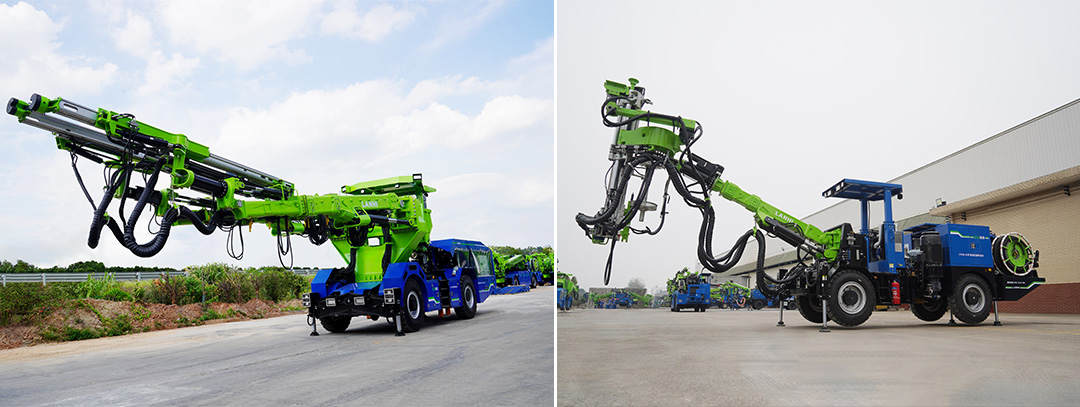In the fields of mining, tunneling, and underground space construction, drilling jumbos and rock bolting rigs are two important types of engineering machinery. Although they often appear together on the same construction site and both have the term “jumbo” or “rig” in their names, they differ fundamentally in core functions, structural design, and application scenarios. The following explains the essential differences between the two.

I. Different Core Functional Roles
1. Drilling Jumbo – the “Pioneer” for Excavation and Blasting
① Core Task: Primarily used for efficiently and precisely drilling deep blast holes in hard rock, creating the necessary conditions for subsequent blasting excavation. Its main objectives are rock breaking and advancing.
② Working Method: Usually equipped with multiple hydraulic rock drills (single-, double-, or triple-boom), long drill rods, and large-diameter bits. By combining high-frequency impact and rotation, it breaks the rock and drills relatively deep (generally over 3 m) parallel or fan-shaped holes.
2. Rock Bolting Rig – the “Guardian” of Stability
① Core Task: Specializes in drilling holes in the rock mass of already excavated tunnels, drifts, or slopes and installing rock bolts (or cables) for support and reinforcement. This prevents loosening or collapse of surrounding rock, ensuring construction and structural safety. Its main objectives are support and stabilization.
② Working Method: Equipped with dedicated drilling and bolting mechanisms (which may integrate drilling, grouting, bolt/cable installation, and tensioning). It drills relatively shallow support holes (typically 1–3 m for rock bolts, and up to 10 m or more for cables), then inserts the bolt or cable into the hole and secures it (e.g., via grouting or tensioning).
II. Different Application Scenarios
1. Drilling Jumbo:
① Drill-and-blast excavation for medium- and large-scale tunnels (especially with cross-sections > 20 m² and lengths > 2,500 m, such as railway, highway, and hydraulic tunnels).
② Development of underground mine drifts and drilling of production blast holes in stopes.
2. Rock Bolting Rig:
① Initial support work immediately after tunnel or drift excavation, following the working face (installation of systematic rock bolts and cables).
② Slope stabilization projects (rock anchoring for slopes along highways, railways, and open-pit mines).
③ Permanent support in underground structures (such as chambers and intersections).
In modern large-scale tunneling and mining projects, drilling jumbos and rock bolting rigs are not substitutes but rather a tightly coordinated “golden pair.” The drilling jumbo, as the “spear of excavation,” efficiently completes the forward blast excavation, while the rock bolting rig, as the “anchor of stability,” follows closely to reinforce the newly exposed rock mass. Together, they form a safe and efficient excavation–support cycle. This mechanized cooperative workflow represents the development direction of safe and efficient construction in underground engineering.





